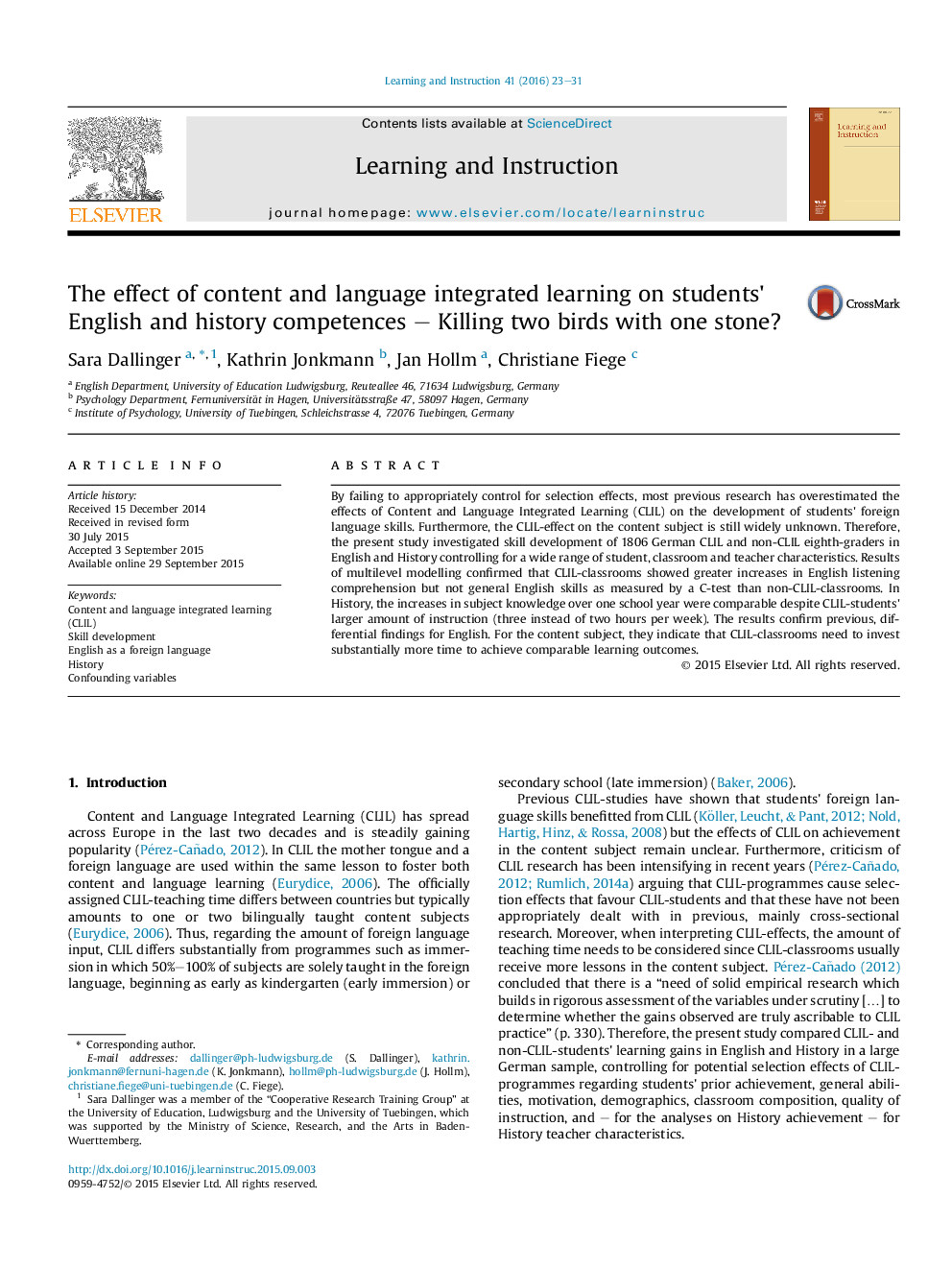| Article ID | Journal | Published Year | Pages | File Type |
|---|---|---|---|---|
| 365485 | Learning and Instruction | 2016 | 9 Pages |
•Content and language integrated learning had positive effects on English listening comprehension.•There was no positive effect on general English skills after considering confounding variables.•Gains in historical knowledge were comparable between CLIL- and non-CLIL-classrooms.•Multilevel modelling allowed to consider classroom composition and teacher characteristics.•Controlling for student- and classroom-variables explained big proportions of variance.
By failing to appropriately control for selection effects, most previous research has overestimated the effects of Content and Language Integrated Learning (CLIL) on the development of students' foreign language skills. Furthermore, the CLIL-effect on the content subject is still widely unknown. Therefore, the present study investigated skill development of 1806 German CLIL and non-CLIL eighth-graders in English and History controlling for a wide range of student, classroom and teacher characteristics. Results of multilevel modelling confirmed that CLIL-classrooms showed greater increases in English listening comprehension but not general English skills as measured by a C-test than non-CLIL-classrooms. In History, the increases in subject knowledge over one school year were comparable despite CLIL-students' larger amount of instruction (three instead of two hours per week). The results confirm previous, differential findings for English. For the content subject, they indicate that CLIL-classrooms need to invest substantially more time to achieve comparable learning outcomes.
